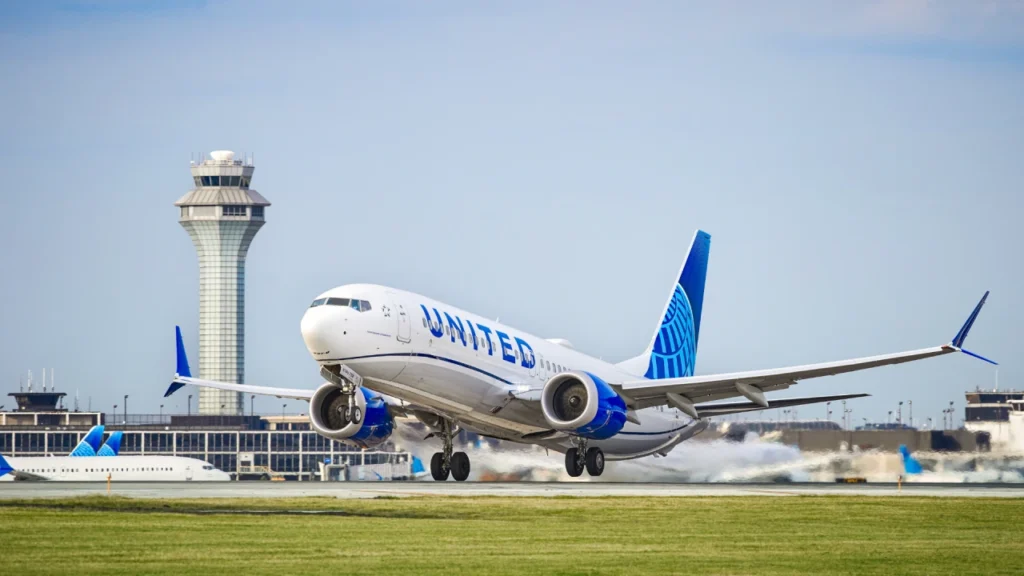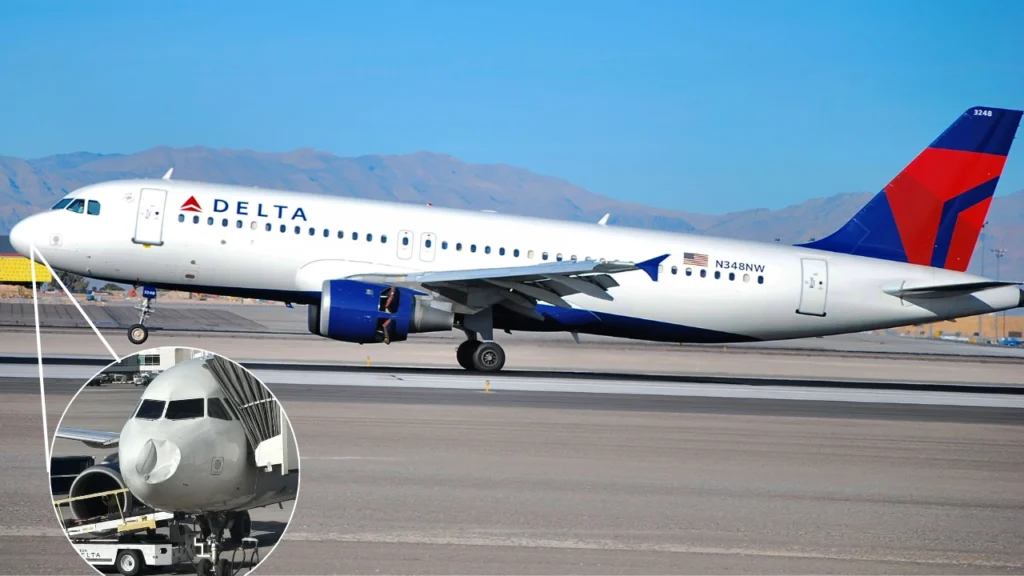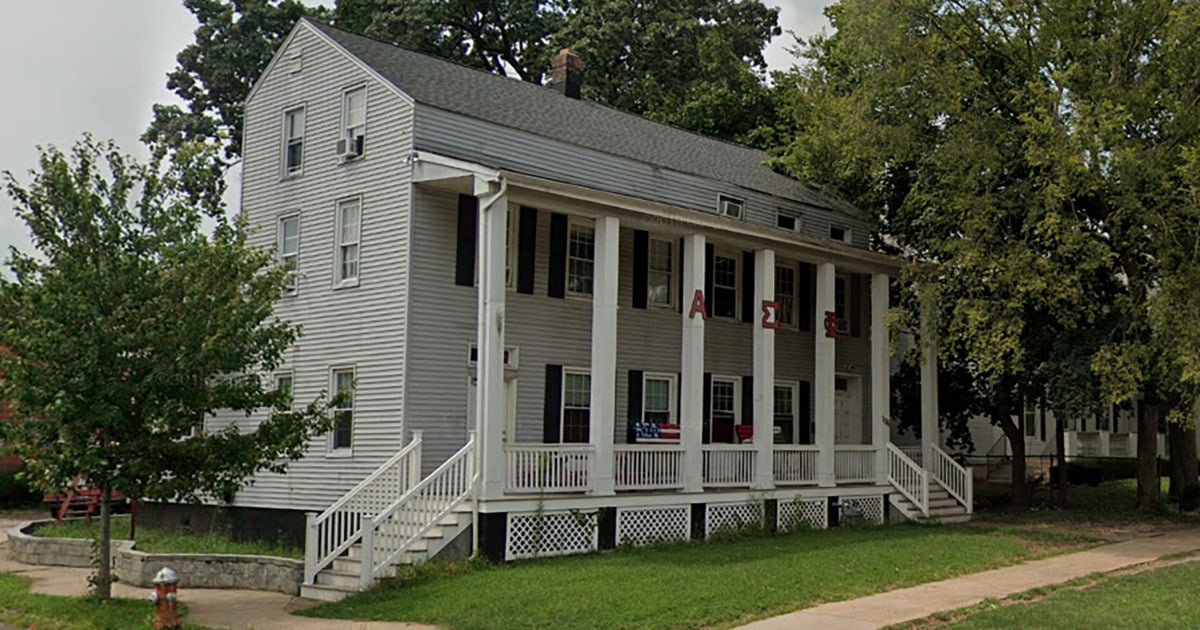CHICAGO- A United Airlines (UA) Boeing 737 MAX 8 flight from Denver (DEN) to Los Angeles (LAX) was forced to divert to Salt Lake City (SLC) after a cracked windshield was discovered midair. The incident occurred on October 16, 2025, during flight UA1093, carrying 140 passengers and crew.
According to reports, the aircraft descended from 36,000 to 26,000 feet before safely landing at Salt Lake City International Airport (SLC). Passengers were later rebooked on a replacement Boeing 737 MAX 9 to complete their journey to Los Angeles with a six-hour delay.


United Pilot Injured After Windshield Cracked
The diversion itself wasn’t unusual—windshield cracks, though uncommon, are known occurrences. What makes this case stand out are the details surrounding the cause.
As reported by OMAAT, images shared online by JonNYC appear to show scorch marks on the windshield and bruising on the pilot’s arm, suggesting a high-energy impact rather than a simple structural crack.
While on a cruise at 36,000 feet, the United flight was approximately 200 miles southeast of Salt Lake City when the crew noticed the damage.
The pilots promptly initiated a descent to 26,000 feet and diverted to the nearest suitable airport. The aircraft, registered as N17327, landed safely on runway 16L—exactly matching the course indicator visible in one of the shared cockpit images.


Speculation About Space Debris or Meteorite
Aviation enthusiasts have speculated that the cause could have been space debris or a small meteorite, based on the scorch patterns and impact marks. Although these claims remain unverified, they highlight an exceptionally rare scenario.
Typically, aircraft windshields are designed to withstand significant bird strikes and pressure changes, but impacts from high-speed debris traveling at orbital velocities are almost unheard of in commercial aviation.
No official confirmation has been made regarding the source of the damage. United Airlines has not reported any injuries beyond the pilot’s minor bruising, and the incident remains under investigation.
Routine Event Turns Extraordinary
Under normal conditions, a cracked windshield would prompt a standard diversion and inspection, often resulting from temperature fluctuations or minor mechanical stress. In this case, however, the presence of visible burn marks adds a layer of mystery that aviation authorities are expected to examine closely.
Regardless of the cause, the crew’s response was by the book—prompt, controlled, and prioritizing safety. Passengers were eventually flown to Los Angeles without further issues, marking a safe conclusion to a highly unusual situation.


Similar Incident
A Delta Air Lines (DL) Airbus A320 flying from Detroit (DTW) to Denver (DEN) on November 11, 2024, sustained visible nose damage due to a mechanical issue but landed safely.
The aircraft, carrying 148 passengers and six crew members, completed the flight without incident and taxied to the gate normally. Delta confirmed that maintenance teams are investigating the cause of the nose damage, which affected the aircraft’s radome section.
Delta Air Lines flight DL1648 departed Detroit Metropolitan Wayne County Airport (DTW) at 12:51 local time and cruised smoothly at 32,000 feet (FL320) for two hours and 39 minutes.
The Airbus A320-200, registered N351NW and nearly 27 years old, touched down safely at Denver International Airport (DEN) at 1:30 PM local time.
According to Denver7, Delta technicians discovered a mechanical fault in the aircraft’s nose area after landing. While the radome appeared visibly damaged, the plane landed safely and taxied to the gate without assistance. No injuries were reported among the passengers or crew.
Delta later confirmed that the damage was not caused by an external strike. The airline issued an apology to passengers and began overnight repairs.
The Federal Aviation Administration (FAA) noted in its Aviation Safety Information Analysis and Sharing (ASIAS) system that a post-flight inspection revealed the “nose cone collapsed for unknown reasons during the flight.” The cause of the failure remains under investigation.
Some observers suggested possible Foreign Object Damage (FOD), but the likelihood of a bird strike was considered low since the crew did not report any impact. Final conclusions will depend on the FAA’s detailed analysis.
On the same day, another Delta aircraft—a Boeing 737 registered N876DN—struck the top of a catering truck at Sacramento International Airport (SMF). No injuries were reported in that event either, but the aircraft sustained minor damage and was taken out of service for inspection.
Stay tuned with us. Further, follow us on social media for the latest updates.
Join us on Telegram Group for the Latest Aviation Updates. Subsequently, follow us on Google News
Source link

/GENERAL%20CROP%20-%202025-10-18T232013.110.webp)